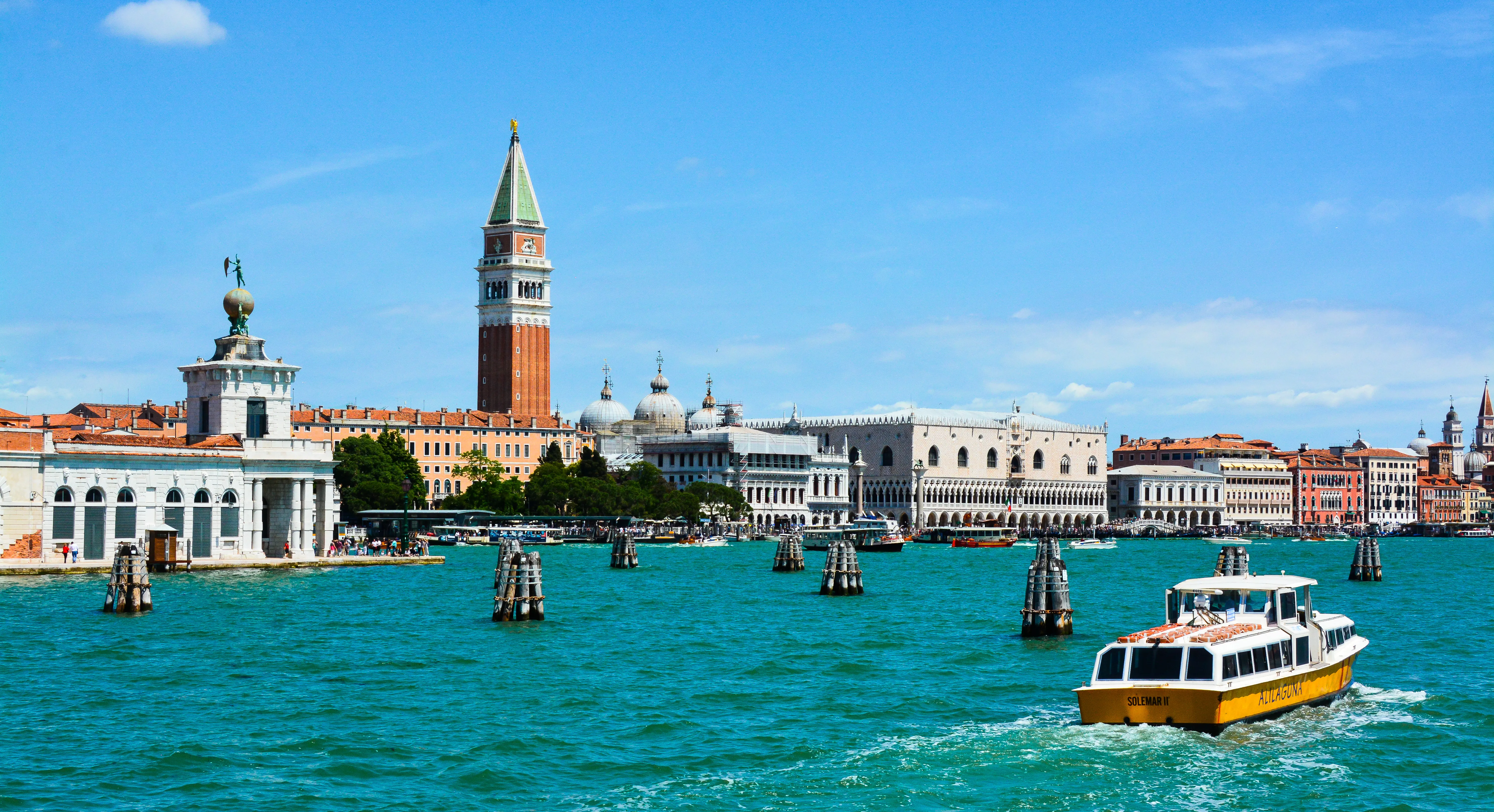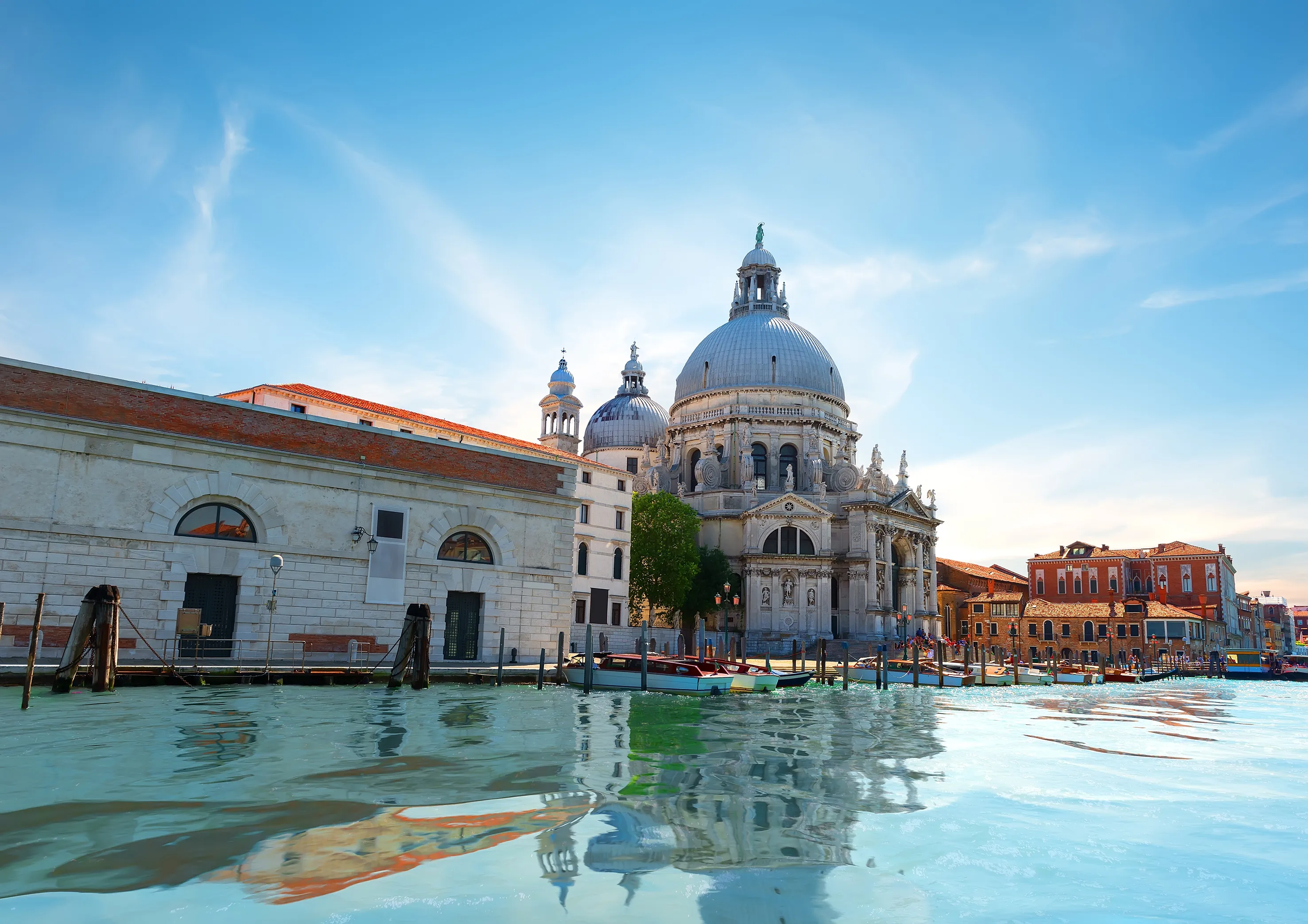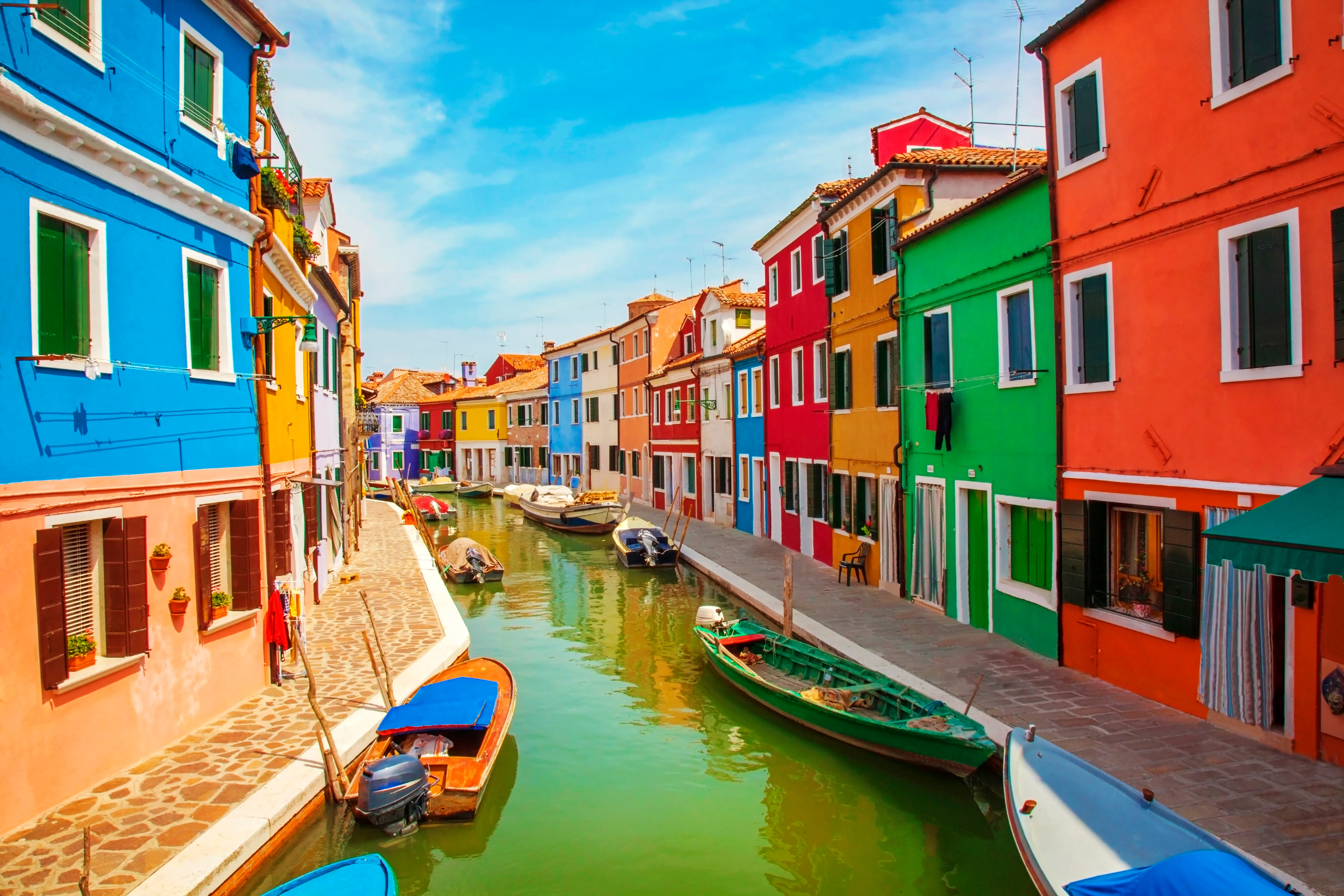- Home
The Po and Venice cruising
The Po River (Italy) and Venice on a cruise
The Po, "King of the Italian rivers": even in Venice
Surrounded by the Alps, the Adriatic Sea and the Apennines, the Po Valley is one of the most populated areas of Italy with more than 1000 inhabitants per square kilometre. It is the first economic region of the country and covers nearly 46,000 square kilometres, about one sixth of the Italian territory. An old Gulf, progressively filled by the river alluvium, it presents diverse landscapes alternating hills and cultivated fields. Its extent can be divided into two parts: the high and the low plains. The first, more arid, is covered with heather and sparse trees. Agriculture has always been difficult so many industries have established themselves there. In the second, on the contrary, the water is abundant and allowed intensive farming.

The Po delta, UNESCO World Heritage
The Po has its source in the Alps, Mount Viso, at 2022 meters above sea level. It waters Turin, Vercelli, Piacenza and Cremona and has many meanders. Its climate is alpine for 35 kilometres and changes as soon as it enters the plain, upstream of Turin to become subalpine. With a length of 652 kilometres, it is the largest river in Italy. It forms from Ferrara a large delta for 100 kilometres before flowing into the Adriatic Sea. Unesco proclaimed the World Heritage Po Delta. Composed of a multitude of rivers and lakes, it is home to countless species of birds such as flamingos, herons and snipes. The region is also remarkable from the historical point of view because it was witness to the Greek and Roman civilizations.
CroisiEurope cruises include some beautiful cities of Lombardy and Veneto: Cremona has some of the most beautiful medieval buildings in the north of the peninsula. Renowned for the manufacture of violins, it is the capital of violin making to which is devoted a museum. Mantua, located on a peninsula surrounded by lakes, is famous for its patron princes, the Gonzaga. A real city in the city, it has many buildings seperated by gardens and loggias. Padua enjoyed such cultural and spiritual influence that Shakespeare called it "the nursery of the arts." St. Anthony, Franciscan friar, saint of lost objects, founded a school of theology there in1229. A basilica was erected in his name because miracles were multiplying around his grave. Small infidelity to the Po, the visit of Verona, which is located on a meander of the Adige, is worth seeing because it represents a beautiful romantic stopover. The city of Romeo and Juliet is, after Venice, the most beautiful city of art in northern Italy.

Venice, an Ali Baba’s cave on a “sunken forest”
When the Po finishes its course in the sea, it becomes the lagoon of Venice. The largest in Italy with a surface of 550 km². 118 islets, 177 canals and 400 bridges. No land, no trees ... Moored for fifteen centuries in the vases of the lagoon, Venice is an island before being a city. Built on thousands of wooden piles that make up a veritable "sunken forest", it defies the laws of nature and architecture and its inhabitants have to don wellington boots when the aqua alta floods the city from October to December. With its gondolas, its carnival, St. Mark's Square, its many churches, its Doge's Palace with openwork facades in white and pink marble and its ceilings painted by Veronese, Venice is an open-air museum, an opera set, a mirror reflecting all the magnificence of Venetian art. Today the city with all its splendours, too expensive to live in, has depopulated its inhabitants, but it gains new tourists every year. There are several million tourists to fill the gondolas, unique in the world, which drag them into a universe dedicated to dreaming every year.

The islands of tradition
The majority of the islands in the lagoon are abandoned. Some are still inhabited and constitute a precious historical heritage for Venice. Among the most remarkable and most picturesque are Burano and Murano, pretty fishing villages that have other strings to their bow: Burano, about 9 km from Venice, offers a different face than the other islands. No palace but a uniform decor of houses painted in bright colours. From the sixteenth century, it was associated with lace- making. Murano, the largest of the lagoon islands, 1.5 km from Venice, owes its fortune to the glass blowing which was transferred from the city of Doges at the end of the thirteenth because of the risk of fire. Chioggia, a fishing village, is a kind of popular version of Venice. It is located on two parallel islands, all in length, with many streets crossing over at right angles to the canal and the main street, the Corso del Popolo giving the city its particular physiognomy.

